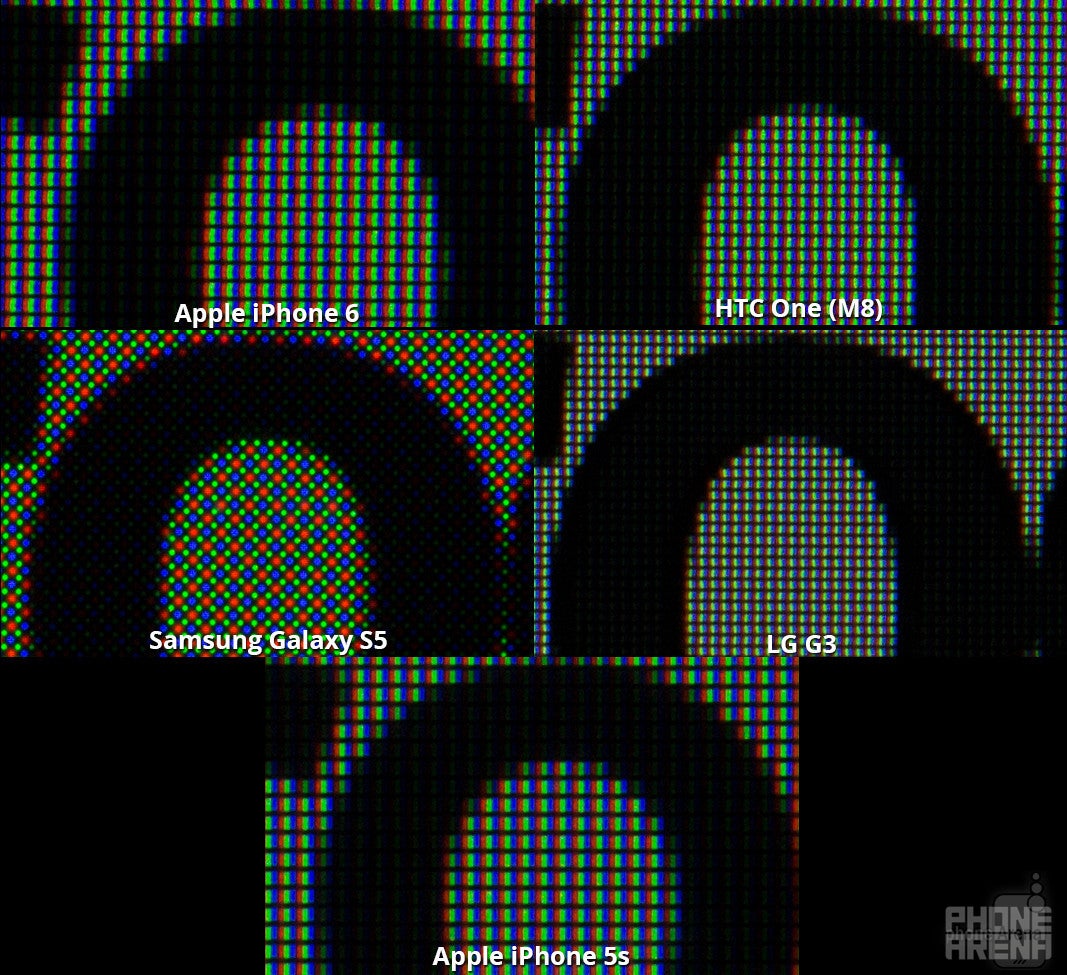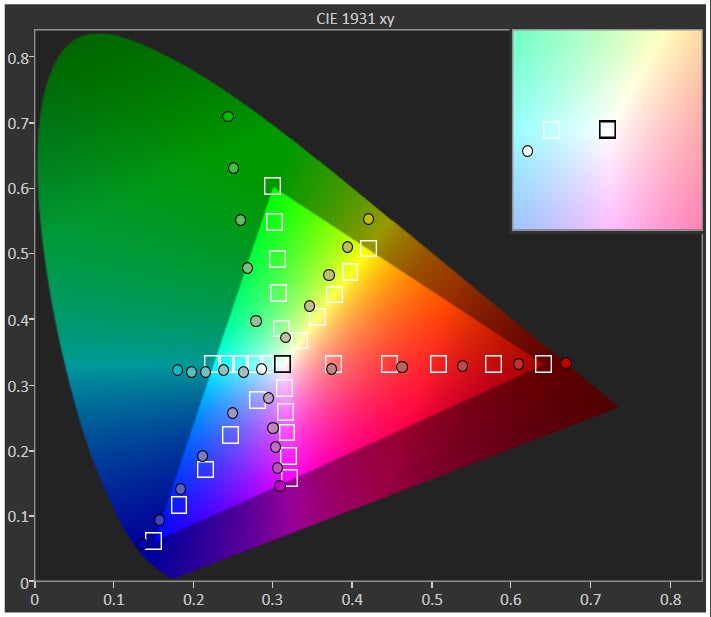Screen comparison: iPhone 6 vs Galaxy S5 vs G3 vs One (M8) vs iPhone 5s

Introduction
Whenever a new major flagship smartphone comes out, we tend to stage an in-depth screen comparison in order to determine if the manufacturer has managed to leapfrog the stiff competition in this all so important aspect. Of course, the just-released Apple iPhone 6 is major enough to justify a new screen comparison, especially since Apple prides itself in producing some of the very best displays in the industry.
Brightness and visibility
We thought the small size of the iPhone 5s' screen had a hand in it achieving that impressive brightness output of 580 nits, but it turns out this wasn't so, because the iPhone 6's screen is now way bigger, but can actually reach the spectacular 600 nits! That's one truly enviable brightness output, however, we've found out that the screen actually appears just a notch dimmer than that of the 5s, when viewed under bright sunlight. We can't be sure if it's due to slightly worse reflectivity or something else, but the fact is that even with a stronger brightness output, the iPhone 6 remains just ever so slightly dimmer outdoors, compared to its predecessor. Nevertheless, 600 nits are 600 nits, so the brightness of Apple's latest gadget is still to be considered top-notch, especially when it can hardly be challenged by most of the high-end Android smartphones out there.

Color accuracy
After the iPhone 5s' terrific characteristics in terms of screen quality, we were hopeful that the iPhone 6 will push things even further with its 4.7” display. Sadly, we can't say that this is what happened in reality.
When we first reviewed the iPhone 5s a year ago, we measured a color temperature of 7150 K. However, displays obviously have the tendency to alter their colors slowly over time, which has shifted the color temperature of the 5s to 7350 K over the course of one year (hopefully the rate of alteration will be getting much slower going forward), which is still fine, although definitely not ideal (the ideal display color temperature is considered to be 6500 Kelvin). Putting the brand new iPhone 6 through our extensive display tests, we have to say that we're slightly disappointed to find that it doesn't improve upon the offering of the 5s when it was new – the iPhone 6's color temp is ~7150 K. Don't get us wrong – that's still among the best out there, but the nerds in us would have been much more satisfied if that figure was sub 7000 K. Just to make things clear for everyone, having a color temperature higher than 6500 K means that the display will have more intensive blue colors, compared to its red colors. In other words, in the case of the iPhone 6, it will appear slightly bluish, or cold, in comparison with what's considered the reference value.

Resolution
For a smartphone, it's extremely important that the screen has a very high resolution, so that all the little thingies that pop up on it can be viewed in a comfortable manner. Indeed, fuzzy fonts and jagged edges are far from ideal when one's reading a lengthy article or playing a game on a phone, and that's why manufacturers have made substantial efforts to pack more and more pixels into these lovely, but relatively small panels. When we're talking about resolution, though, the resolution itself isn't the only important factor. It's the combination of resolution and screen size that gives us an idea of how fine things are going to look on a particular display. The metric we use to measure this is pixel density (measured in ppi, or pixels-per-inch). Beginning with the iPhone 4, all the way to the new iPhone 6, the pixel density of Apple's smartphones has been 326 ppi. That's mighty fine, and some might argue that there isn't much use in going north of that number, but nonetheless, Android phone manufacturers have been pushing higher pixel densities en masse. The Galaxy S5's 5.1” screen, for example, has a resolution of 1080 x 1920 pixels, which results in the spectacular pixel density of 432 ppi. That means things will look even cleaner than those on the iPhone 6's screen, but since the iPhone 6 already has a very high pixel density, the total difference in clarity isn't that substantial.
At the end of the day, all smartphones that we're examining here have more than sufficient resolution. Those devices with 1080p res and up do offer a slightly cleaner image, but the practical differences are so small, it makes us wonder if the performance and battery trade-off isn't too big. Still, it's unlikely that manufacturers will tone things down in the future, so it looks like ultra-high resolutions is where we're heading. For the time being, though, the iPhone 6's 750 x 1334 pixels will be more than enough.

Close-up shot of the screens' pixel layouts

Conclusion

What we're looking forward to now is the upcoming crop of Android flagships, because it'll be interesting to see if they have managed to produce big displays of even higher quality.



















![iPhone users on AT&T left without service after massive outage [UPDATED]](https://m-cdn.phonearena.com/images/article/161893-wide-two_350/iPhone-users-on-AT-T-left-without-service-after-massive-outage-UPDATED.jpg)














Things that are NOT allowed: